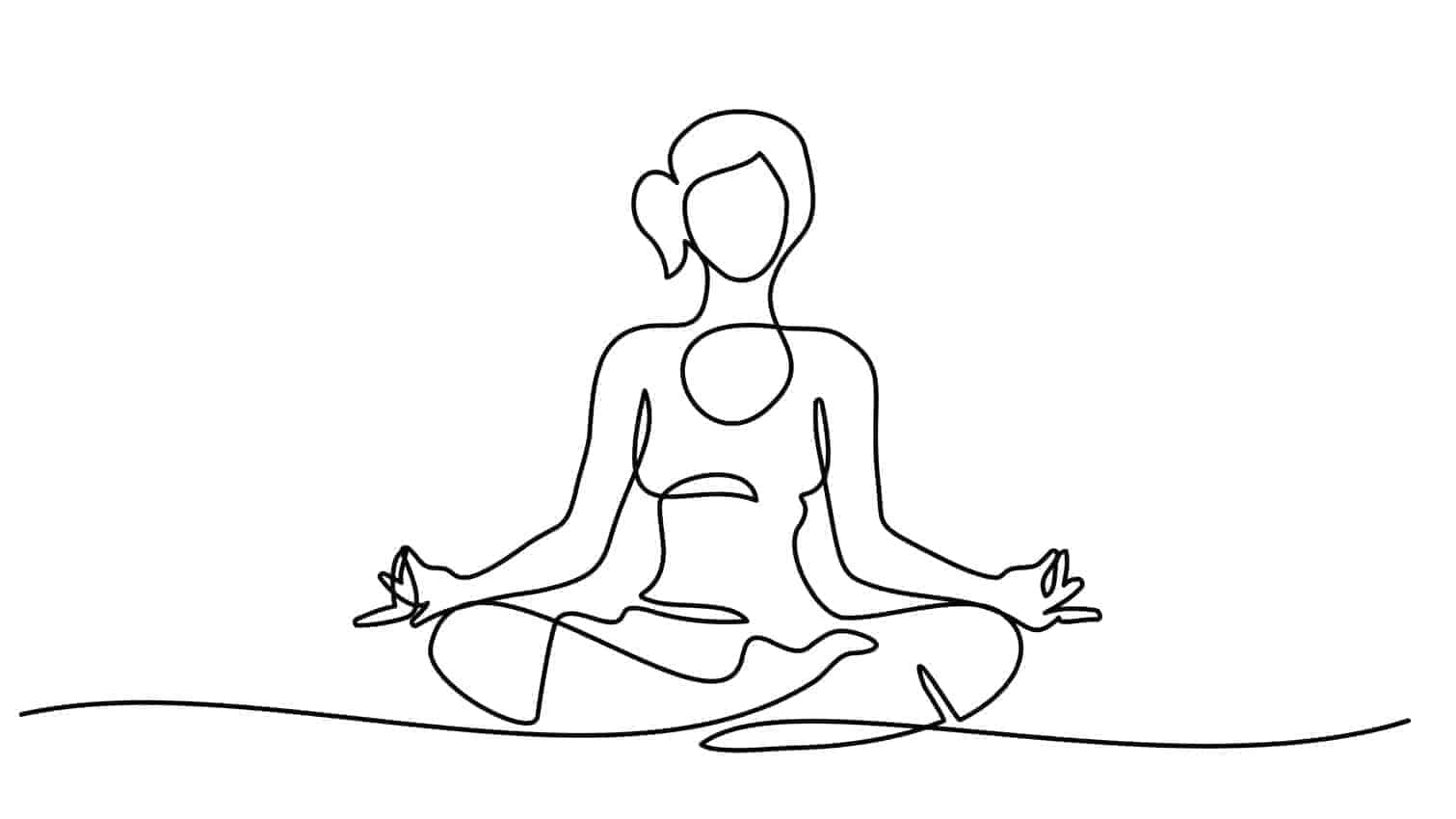Meditation
Zen and Meditation Gardens: Glimpses of Heaven on Earth
THC Editorial Team July 21, 2021

Contents
- Overview
- What Is a Meditation Garden?
- The Origins of Meditation Gardens
- Elements of a Meditation Garden
- What Are the Potential Benefits of Meditation Gardens?
- Some Final Thoughts
The garden is a spiritual place where the mind dwells.1
What Is a Meditation Garden?
Shunmyo Masuno, a Zen Buddhist priest and a leading Japanese garden designer, shares that “the garden is a spiritual place where the mind dwells.”1 Meditation gardens, or Zen gardens, are consciously designed environments intended to provide a welcoming, quiet, and calm retreat from the chaotic modern world. These intimate, meditative spaces offer their users a place outside the noise and clutter of daily routines to unwind, reflect, and more naturally access their senses, intuition, and inner being.
Unlike a regular garden, which often includes play structures, brightly colored flowers, or vegetable beds, a meditation garden typically highlights soothing water features, winding paths, symbolic statues, and lush greenery while incorporating straight lines and minimalist design.1 However, many types of gardens, including botanical gardens, can be a suitable place for someone to meditate.
Meditation gardens vary greatly depending on their size and scale. Large gardens may feature more elaborate designs with trees, water elements, bridges, and wildlife. In contrast, a small garden might contain only a winding path, a few polished rocks, a seating area such as a bench, baritone wind chimes, and sand in a small tray.
Meditation gardens are a part of various cultures and are found in different regions of the world. For example, Japanese Zen gardens bear some similarities to traditional Iranian gardens. Zen gardens reflect Shinto ideas about harmony and respect for nature, and Iranian gardens are considered “the symbol of heaven on earth,”2 invoking wonder and peacefulness. These gardens are believed to have therapeutic and healing properties.3
Overall, the goal of such gardens is to offer a meditative space, an opportunity to pause, to find a sense of balance, to reduce emotional and physical stress, and to increase focus, relax, and cultivate a sense of peace. They aim to create places where meditators can experience a deep, mindful connection to their consciousness.1
Shinjuku Gyoen National Garden. Photo by Thor Alvis on Unsplash.
The Origins of Meditation Gardens
The exact origins of meditation are debated, but it has been part of Eastern societies for thousands of years as a spiritual practice.4
Meditation gardens, however, appear to have originated in 6th-century Japan during the reign of Empress Suiko as a component of Mahayana Buddhism. This sect of Buddhism focused primarily on mindfulness rather than the meticulous study of scriptures or ritual worship.5 These initial gardens typically featured an island within a pond—the pond represented the ocean; and the island, Mount Horai of Chinese mythology (where elixirs of immortality were developed).1
Persians have cultivated formal gardens since the Achaemenid times (500–300 BC) and developed elaborate gardens according to the mandala design during the Sassanian era (AD 226–641). The Iranian gardens were further refined after the introduction and influence of Islam from the 600s.6
With much of the attention on effective meditation, Zen gardens were a sanctuary to help people calm, declutter, and focus their minds. Using features such as sand, rocks, pebbles, and sometimes native plants, flowing water, or bridges, these gardens evoke feelings of peace, tranquility, and calmness. In one common practice within meditation gardens, people rake the sand in swirling patterns to relax or concentrate on the texture of the lines as a focus exercise.7
Elements of a Meditation Garden
As a meditative space, the key elements of a meditation garden are simplicity and removing distractions. That usually means no cell phones, tablets, or televisions. Research shows that the natural sounds of the meditation garden itself and the absence of man-made noises positively affect well-being by lowering stress levels, decreasing pain, and improving mood.8
Harmonious asymmetry is an element often expressed in Japanese Zen gardens. “Related to the concept of incompleteness, or fukanzen, asymmetry suggests movement and effects an understanding of the beauty of the organic irregularity of the natural world.”1 In contrast, Persian gardens are known for their geometric and aesthetic symmetry and balance.3
Fin Garden, Kashan. Photo by BalkansCat on Shutterstock.
While one meditates in their garden, they can tune into the gentle sounds of nature, effectively making native birds, a running water feature, and the wind blowing through the trees the quiet soundtrack of the meditation session. Water, in particular, can be helpful for this. A water fountain or similar element is common in meditation gardens because many find the sight and sound soothing.9 Koi ponds are also a lively feature in some meditation gardens.
Rocks can bring to mind mountains, reminding one of strength and patience. Rocks may also “symbolize a crane or a tortoise, denoting longevity and health.”1 Walking barefoot allows one to interact with the earth and take advantage of microbes in the soil. Creating paths, preferably curved and winding ones, encourages thoughtful walks throughout the garden.9 Another helpful element that can be included in the design of a meditation garden is a meditation chair. Many meditation chairs are designed for outdoor use and can hold up to the elements. This can be as simple as a bench or a paved or grassy spot for a yoga mat. Pavers or other items can also be included to clearly but gently delineate the space.
Meditation gardens can be thought of as miniature representations of the world. They often contain miniaturized elements such as bonsai trees, stones, and waterways, which are symbolic of full trees, mountains, and rivers, respectively.1
An abundance of plant life is another key component for the effectiveness of a meditation garden landscape. Studies show that being around plants helps people concentrate better in the home and workplace. Plants have also been proven to have a calming influence, and being outside in a natural environment can even improve one’s attention span and memory performance by up to 20%.10
Specifically, certain plants have been shown to fit nicely into meditation gardens. These include showy milkweed, red bee balm, and blazing star. These beautiful plants are a joy to observe and also attract wildlife such as hummingbirds and other pollinators.
Breath is another essential component of most meditation and yoga practices. In a garden-based meditative setting, breathing in the natural scents can have a profoundly relaxing effect.
Many people create low-maintenance gardens by using a small space in their yard and simply installing a fence for privacy, a bench for seating, an assortment of plants, and a tree or two for shade. These little yard gardens are relatively easy to create and can act as a personal sanctuary for meditation and experiencing serenity and harmony with the earth.
What Are the Potential Benefits of Meditation Gardens?
A significant benefit of meditation gardens is that they are intentionally designed to facilitate meditation. As many research studies have demonstrated, meditation can benefit us in the following ways:
- It can reduce stress and anxiety symptoms in people with generalized anxiety disorder.9,11
- It can lead to decreased symptoms of depression.12
- It can help increase the strength and endurance of one’s attention span.13
- It can reduce age-related memory loss.14
- It can potentially help fight addictions.13
- It can improve the quality and length of sleep.15
- It can help control or even ease physical pain.16
- It can decrease blood pressure.17
Research has also shown that meditation can thicken the prefrontal cortex, which is the part of the brain that manages higher order brain functions such as increased awareness, concentration, and decision-making,18 and can affect gray matter. A recent example showed that experienced meditators’ gray matter levels declined at a lower rate than the control group of non-meditators. This indicates that regular practice can potentially maintain the health of the frontal cortex and prevent aspects of mental deterioration that come with age.19
In addition, other studies have revealed the following particular benefits associated with gardening or spending time in nature:
- It boosts mood and increases levels of calm.20
- It gives rest to the eyes and prevents eye strain.21
- It can lower blood pressure.22
- It can reduce stress levels.23
A 2019 study of nearly 20,000 participants found that people who spent just 2 hours a week in a green space like a garden were more likely to report high well-being and good health levels than those with no nature contact. This 2-hour chunk of time did not need to be spent all at once and could be broken up throughout the week with a similarly beneficial effect.24
Another study published in 2001 in the Journal of Environmental Psychology provides more evidence of the positive effects of meditation gardens based on observations of a healing garden at a children’s hospital. Roughly 85% of users reported feeling more refreshed, relaxed, or better able to cope with their situation after spending as little as 5 minutes in the healing meditation garden.25
A meditation garden can help practitioners reap the benefits of both meditation and gardening. Meditation gardens cultivate a calming, natural, and peaceful environment that eases the transition into a meditative mindset and can help people connect with their inner self.
Some Final Thoughts
Shunmyo Masuno says:
To regain stillness in one’s kokoro [literally “spirit, heart, and mind”], to calmly return to oneself, only gardens—nature—can offer the space to feel such grace. Especially for working people of today, who spend 24 hours a day inside buildings with a regulated room temperature, where it’s difficult to sense the changes in time and season, such a space is essential.1
A meditation garden may be just the thing for those trying to expand their meditation practice and connect with and spend time in nature. It only takes a few elements to get started, resulting in a tranquil escape from everyday life. Research has demonstrated the positive effects that meditation can have, and a meditation garden only enhances one’s ability to tune out distractions, focus, relax, and cultivate a sense of peace and awe.
















